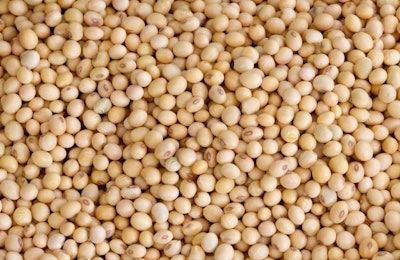
Responding to a recent call from the European Commission for views from experts and stakeholders on the European Union plant protein sector, the region’s compound feed industry body has called for a wide range of protein crops to be considered in any future plan.
While welcoming the aims of the Commission in developing future strategy, key for the feed industry is protein quality, according to the European Feed Manufacturers’ Federation, FEFAC.
Offering the largest market potential for vegetable proteins grown in the EU, the views of the compound feed industry are important for the future success of any future EU-wide protein plan.
“We notice the strong political interest to reduce the EU protein deficit and the inherent reliance on imports,” said Nick Major, FEFAC’s president. “It should be clear, however, that market demand from the feed industry for European vegetable protein is based on the nutritional requirements of livestock, i.e. identifying the optimal protein quality in available feed materials, and delivering them to food-producing animals. We, therefore, need to ensure that the quality and nutritional composition of the protein is fully taken into account.”
For FEFAC, the most important parameters regarding protein quality are amino acid profile, digestibility, protein concentration, and the absence of anti-nutritional factors. These can best be delivered by focusing on investing in plant breeding technologies that can be brought to farm level, according to the Federation.
Looking ahead, FEFAC highlights that the most rapidly growing animal protein sectors globally are aquaculture and poultry, which also have the highest demands regarding protein quality. Within the EU, it is the poultry and dairy sectors that are forecast to drive the region’s growth for high-protein feed ingredients.
Seven key recommendations
- Among FEFAC’s recommendations to the European Commission is a need for a comprehensive and long-term action plan covering the competitiveness of EU protein production.
- It is also calling for the consideration of the possible impacts of a wide range of other policies — for example, on plant breeding, greenhouse gas reduction and crop protection — on home-grown protein sources. New tools may be needed to assess any such impacts.
- Another potentially useful tool is FeedMod, according to FEFAC, which recommends it is made operational and updated. It can model animal feed consumption in the EU, and can therefore be used to assess protein and amino acid requirements of the livestock population.
- FEFAC would like to see forage production and grazing included in the protein balance sheet, as they are important sources of protein for ruminant animals.
- With the production and uptake of home-grown vegetable proteins by the feed industry likely to vary between regions, FEFAC sees a need for a regional supply-and-demand model.
- The Federation is also calling for research projects to be encouraged in the EU between the animal nutrition and plant breeding branches, to identify ways to overcome nutritional challenges with the feeding of rapeseed, sunflower and soybean, and where there are potential trade-offs, such as increased phosphorus excretion from animals fed home-grown proteins.
- Last but not least, FEFAC is calling for a level playing field within the EU regarding the definition of non-genetically modified (non-GM) feeding requirements, and claims for animal products.
“The GM versus non-GM debate has no impact on protein quality and requirements for the farm animals, but may negatively affect the competitiveness of EU feed production due to higher cost of sourcing of non-GM protein sources,” FEFAC said.
After eliciting the opinions of experts and stakeholders, the European Commission is scheduled to produce a detailed report on the state of play and possible future measures for EU protein crop production by the end of 2018.

















